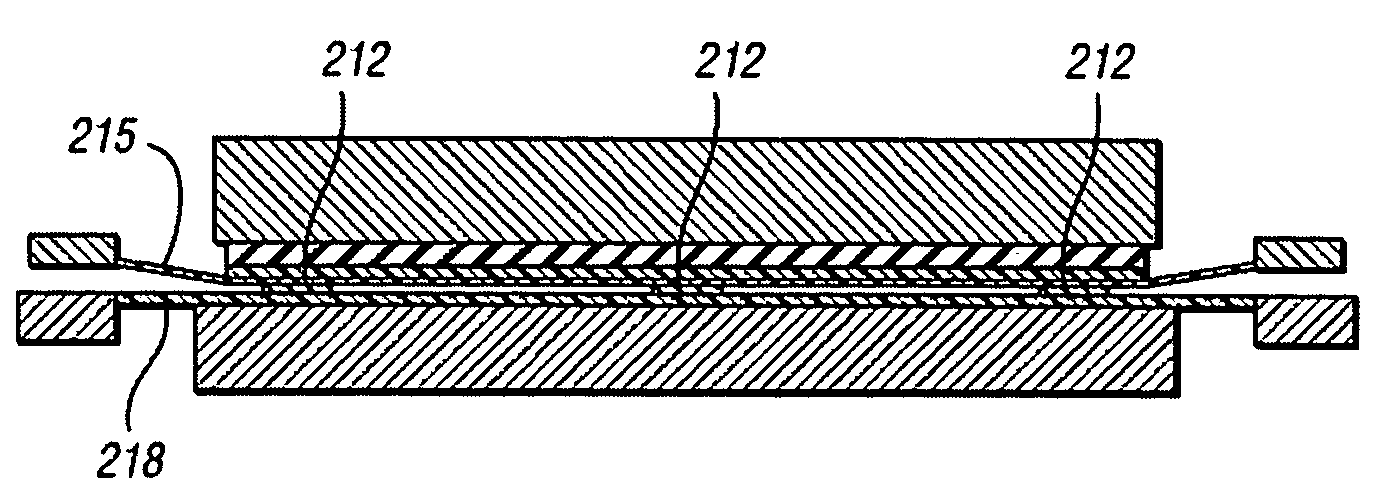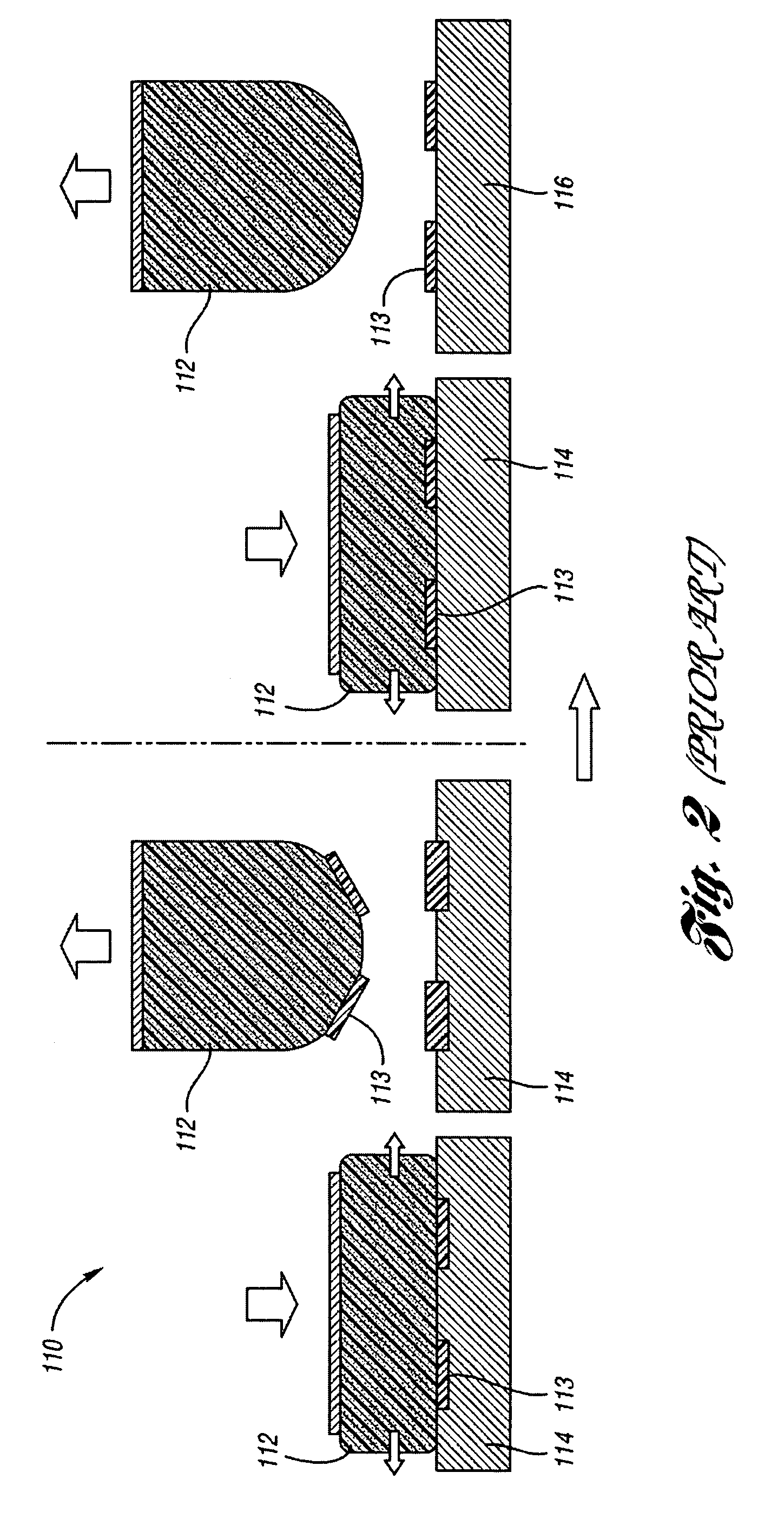Method of transferring a membrane image to an article in a membrane image transfer printing process
a technology of membrane image and transfer printing, which is applied in the field of transfer of membrane image to an article in a membrane image transfer printing process, can solve the problems of inability to optimally function in the printing process, the defect of applied print, and the significant differences between mit printing and either conventional screen printing or conventional pad printing with respect to the effect of transferring imag
- Summary
- Abstract
- Description
- Claims
- Application Information
AI Technical Summary
Benefits of technology
Problems solved by technology
Method used
Image
Examples
example 1
Ink Thickness Measurement via Interferrometry versus Profilometry
[0079]A total of seven flat materials of various compositions and properties as identified in Table 2 (Run #'s 1–7) were printed using conventional screen printing. The screen printing operation consisted of a standard screen printer (Saturn, M&R Screen Printing Equipment Inc.) equipped with a 65 durometer, Shore A squeegee and a 160 mesh screen. The different substrates consisted of two hardness ranges as exemplified by being either a “hard” thermoplastic, such as nylon, polycarbonate, ABS, and TPO, or a “soft” elastomer (rubber), such as a silicone and nitrile. The thickness of all substrates was held at a constant value. All substrates were printed simultaneously using identical printing conditions (e.g., applied force, transverse speed, flood time, etc.) and a black screen printable ink (Noriphan HTR-952+10 wt. % 097 / 003 retarder, Proell K G, Switzerland).
[0080]
TABLE 2THICKNESS(micrometers)HardSubstrates1polycarbon...
example 2
Laboratory and Production Prototype MIT Apparatus
[0089]Since interferometry in Example #1 established that the ink thickness deposited onto the soft membrane was comparable to that deposited via screen printing onto polycarbonate, the most cost effective test procedure would be to evaluate all printed images after MIT transfer from the soft membrane onto a polycarbonate substrate. Under these conditions, e.g., the MIT transfer of the print from the membrane to polycarbonate prior to testing, a conventional profilometer could be used to accurately determine the ink thickness values.
[0090]A laboratory scale, MIT apparatus was built in order to cost effectively evaluate both membrane materials (25.4×25.4 cm maximum size) and ink compositions, as well as to understand the fundamentals associated with the transfer of ink from the membrane to a polycarbonate substrate. This laboratory apparatus simulated the actual operation of full scale production MIT equipment. In this sense, a form fi...
example 3
Screen Printing DOE using Laboratory MIT Apparatus
[0092]An initial Design of Experiment (DOE) was constructed as a replicated 22 full factorial (Resolution V) design attempting to explore the relationships between squeegee hardness and applied force during screen printing of the Noriphan HTR-952 (Proell KG) ink system onto a silicone membrane (SIL60, Kuriyama of America). The experimental design is provided in Table 4 along with the data measured for ink thickness and image texture or quality. A total of 12 experimental runs were performed in order to include 4 midpoint runs (Standard Order #'s 9–12) used to determine curvature in the resulting model. The experimental error for these experiments is established through both the midpoint runs and through the replication of all runs (i.e., Standard Order #'s 1 and 2 utilize identical parameter settings). This entire experimental design was performed twice using a squeegee with a different angle (0° or 45°) as defined in FIG. 5.
[0093]Th...
PUM
| Property | Measurement | Unit |
|---|---|---|
| surface energy | aaaaa | aaaaa |
| thickness | aaaaa | aaaaa |
| thickness | aaaaa | aaaaa |
Abstract
Description
Claims
Application Information
 Login to View More
Login to View More - R&D
- Intellectual Property
- Life Sciences
- Materials
- Tech Scout
- Unparalleled Data Quality
- Higher Quality Content
- 60% Fewer Hallucinations
Browse by: Latest US Patents, China's latest patents, Technical Efficacy Thesaurus, Application Domain, Technology Topic, Popular Technical Reports.
© 2025 PatSnap. All rights reserved.Legal|Privacy policy|Modern Slavery Act Transparency Statement|Sitemap|About US| Contact US: help@patsnap.com



